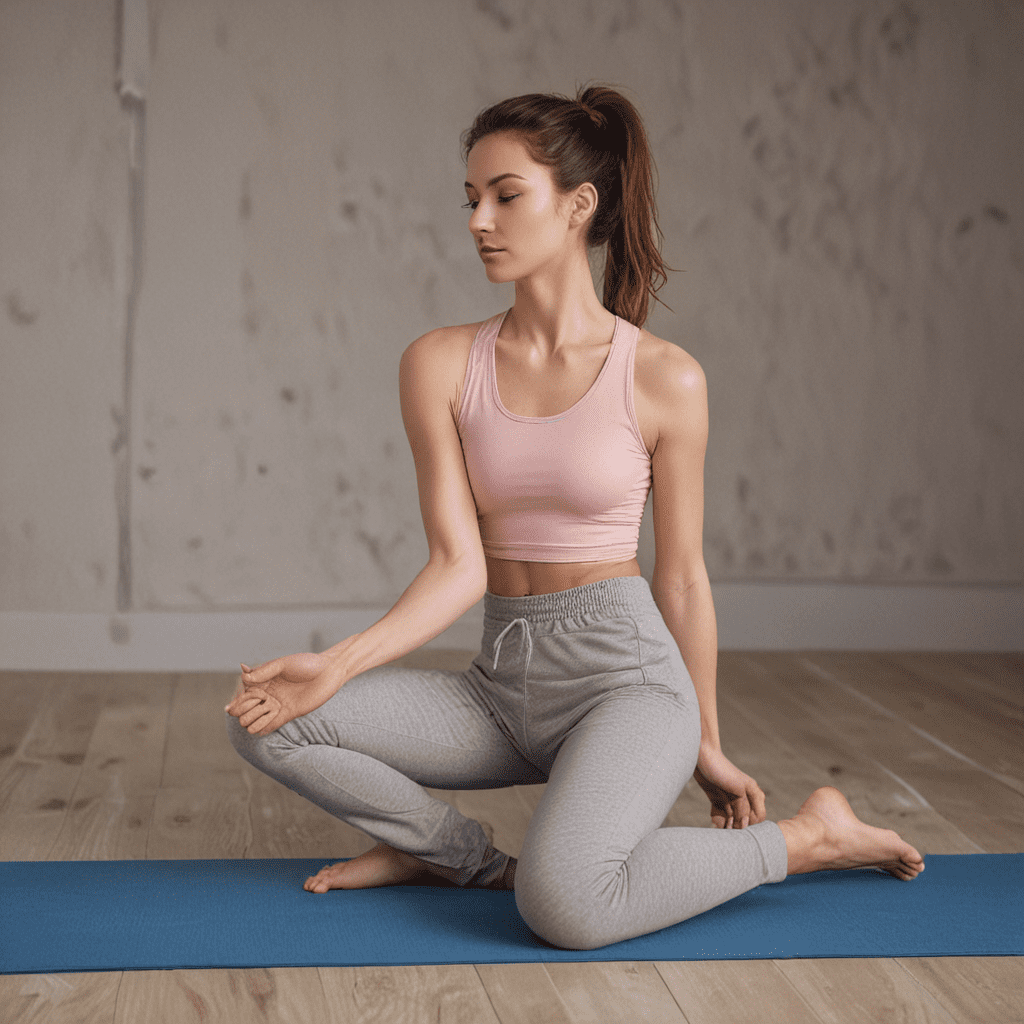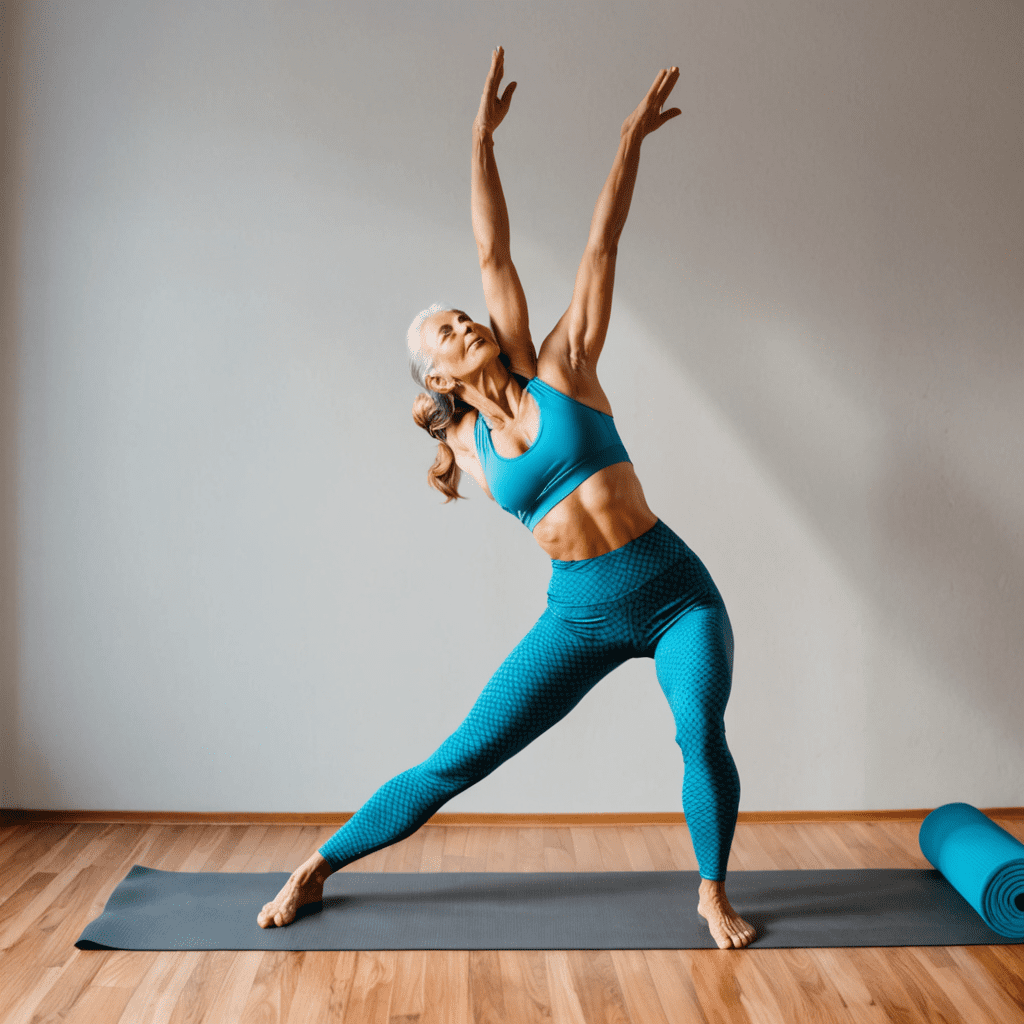
1. Introduction to Mindfulness and Stretching
In today's fast-paced world, stress and tension have become ubiquitous. Mindful stretching offers a holistic approach to combat these stressors while enhancing flexibility and overall well-being. Mindfulness, the practice of directing non-judgmental attention to the present moment, can be incorporated into stretching to enhance its benefits.
2. Benefits of Mindful Stretching
Mindful stretching synergizes the physical advantages of stretching with the mental benefits of mindfulness. Its numerous benefits include:
- Stress reduction: Mindfulness helps calm the mind, reducing stress levels. Stretching complements this by releasing tension in the body.
- Improved flexibility: Stretching improves range of motion and reduces muscle stiffness, supporting daily activities and athletic performance.
- Increased body awareness: Mindfulness enhances proprioception, or the body's sense of position, improving posture and movement efficiency.
3. How to Practice Mindful Stretching
Mindful stretching involves focusing on the present moment while performing stretches. Key principles include:
- Non-judgmental observation: Pay attention to sensations in your body without judgment or labeling.
- Focused breathing: Inhale and exhale deeply, using breath to guide movements and connect with the present.
- Slow and controlled movements: Perform stretches slowly and deliberately, allowing for deep tissue engagement and enhanced mindfulness.
- Concentration on the present: Avoid distractions and bring your full attention to the task at hand.
4. Warming Up Before Stretching
Adequate preparation is crucial before mindful stretching to prevent injury and enhance effectiveness. Begin with light cardio, such as brisk walking or jogging, to elevate body temperature and prepare muscles for stretching. Dynamic stretches, like arm circles or leg swings, gently prepare muscles and improve range of motion.
5. Specific Stretching Techniques for Stress Relief
Mindful stretching integrates specific techniques to target stress-related tension. Consider incorporating the following stretches into your routine:
- Child's pose: Kneel with your knees hip-width apart, toes pointed. Sit back on your heels, fold forward, and rest your forehead on the ground. Hold for several breaths.
- Forward fold: Stand with your feet shoulder-width apart, hinge at the hips, and fold forward from your waist. Let your arms hang down or place your hands on the floor. Hold for several breaths.
6. Safety Considerations
Always listen to your body when practicing mindful stretching. Respect your limits and avoid overstretching, which can lead to muscle strains or injuries. If pain or discomfort occurs, gradually reduce the intensity or duration of the stretch. Consult a healthcare professional if pain persists.
7. Cooling Down After Stretching
Wind down your mindful stretching session with a cool-down period. Gentle stretches, such as walking or light yoga, help restore muscles to their pre-stretch state and prevent post-exercise soreness. This also supports the transition to a relaxed and calm state.
8. Integrating Mindful Stretching into a Routine
Consistency is key to reaping the full benefits of mindful stretching. Aim to incorporate short sessions into your daily or weekly routine. Even a few minutes of focused stretching can make a significant difference. You can practice mindful stretching in the morning, during breaks at work, or before bed.
9. Variations and Modifications for Different Needs
Mindful stretching can be adapted to suit individual needs and preferences. For beginners, focus on gentle stretches that don't cause discomfort. As flexibility improves, gradually increase stretch intensity and duration. If you have any physical limitations or injuries, consult a healthcare professional before performing any stretches.
10. Conclusion: Enhancing Well-being Through Mindful Stretching
Incorporating mindful stretching into your life is a powerful tool for stress relief, improved flexibility, and enhanced overall well-being. By combining the physical benefits of stretching with the mindfulness of non-judgmental observation, you can create a transformative practice that supports your physical and mental health.
FAQ
Q: How often should I practice mindful stretching?
A: Aim for short daily or weekly sessions to reap the benefits consistently.
Q: Can mindful stretching help with muscle recovery?
A: Yes, mindful stretching can promote muscle relaxation and reduce soreness after exercise.
Q: Is mindful stretching suitable for all fitness levels?
A: Yes, mindful stretching can be adapted to fit the needs of all individuals, regardless of fitness level.
Q: Can I combine mindful stretching with other mindfulness practices?
A: Yes, you can integrate mindful stretching with meditation or yoga to enhance the overall benefits.
Q: What are some key tips for practicing mindful stretching?
A: Focus on present-moment awareness, breathe deeply, move slowly and intentionally, and listen to your body's signals.


